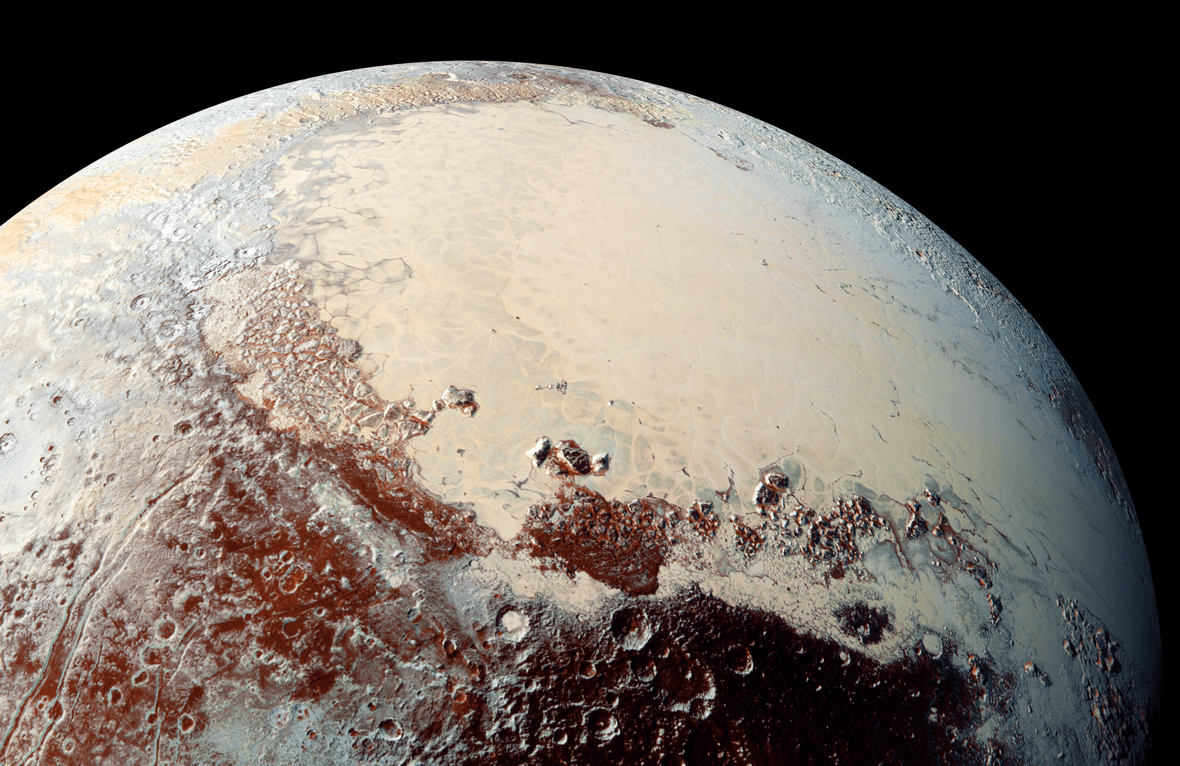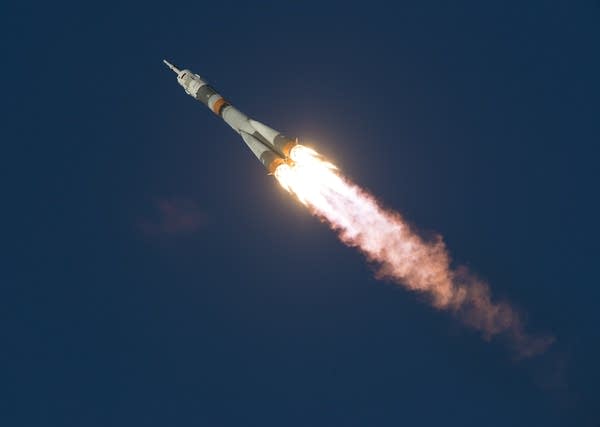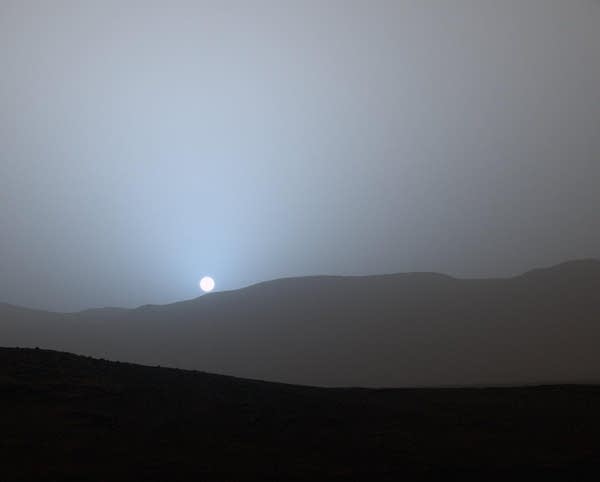Where we go: Part 2 of your year-end reading list

Cold War machines continue their long pedigrees of peaceful space travel to expand human reach across the solar system.
The New Horizons probe pierced the heavens on its way to Pluto atop the latest evolution of a 1950s-era inter-continental ballistic missile this year, and astronauts on their way to the International Space Station are riding atop Soyuz rockets, the latest evolution of the Russian R-7.

Originally designed to carry aloft the massive nuclear warheads of the 1950s, the R-7 rocket was replaced as an ICBM when nuclear weapons began to miniaturize.
Repurposed to fly peaceful — though heavy — lift-to-orbit missions, the derivatives of the R-7 launched the Sputnik satellite and cosmonaut Yuri Gagarin. They live on to deliver humans and supplies to the International Space Station.
Create a More Connected Minnesota
MPR News is your trusted resource for the news you need. With your support, MPR News brings accessible, courageous journalism and authentic conversation to everyone - free of paywalls and barriers. Your gift makes a difference.

Looking forward to 2016, travel to the ISS may be less routine, depending on how things shake out as Russian President Vladimir Putin's administration dissolves the Russian space agency, Roscosmos, replacing it with a new Russian space corporation.
International Space Station
Fifteen years of human habitation on the International Space Station has made the ISS a nexus of scientific study. Astronauts have been conducting a myriad of scientific experiments, some focused on answering unknown questions about what might happen to people headed for Mars.
• A year in space
In March 2015, astronaut Scott Kelly began his year in space, as part of a comparative study with his twin brother Mark, a retired astronaut, to measure the impact of long-term space flight. A multi-part video series by Time profiles the mission.
• Space Lettuce
Astronauts Kimiya Yui (left), Kjell Lindgren and Scott Kelly taste the lettuce and render verdicts.

Mars
As of May 2015, Mars has five active orbiters, and at least one non-functional orbiter, in the red planet neighborhood. One of these, the MAVEN probe, was able to determine how Mars was stripped of its atmosphere, mainly because of a weak magnetic field that was unable to hold the solar wind at bay.


The Curiosity rover has been slowly scaling Mount Sharp, examining the layers of sedimentary rock as it makes the slow march toward the summit.

• Track the progress of Curiosity
The rover is trundling along the Martian landscape toward the summit of Mount Sharp.
Pluto & Charon
New Horizons, taking a nearly nine-year journey through the solar system, was launched atop an Atlas V 551 rocket in 2006 on a solar escape trajectory. In 2007, Jupiter and its moons served as the trial run for the probe's sensor suite as it raced by to meet Pluto.

As July came around, we were greeted with a new haunting image of Pluto and Charon.

In order to collect as much data as possible New Horizons went dark, ceasing any transmissions home until after the flyby was complete. When the darkness was pierced, the data turned out to be amazing.

• Intricate pattern of pits on the surface
A large pattern of "pits" in Pluto's Tombaugh Regio suggest recent surface activity, due to the lack of visible impact craters compared to other regions of Pluto. NASA researchers believe these "pits" will provide hints of how the surface ice flows, interacts with the atmosphere and changes the surface of Pluto.

Charon up close
For the first time, Pluto's moon, Charon, was available in full view to unveil a varied landscape of mountain, canyons and more.
• How to reach MU69 from Pluto
As New Horizons was transmitting Plutonian data back, navigators plotted a new course to the Kuiper belt object called 2014 MU69.
In October, the first preliminary study of Pluto was published summarizing the early data returned to us about Pluto and its natural satellites.